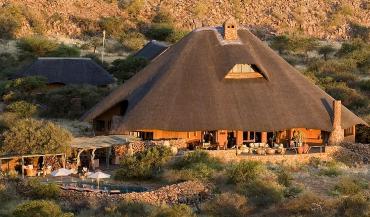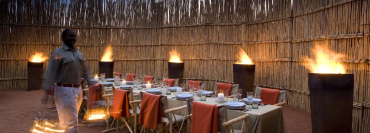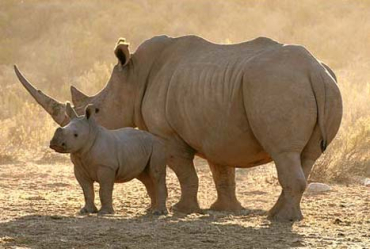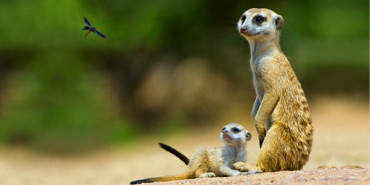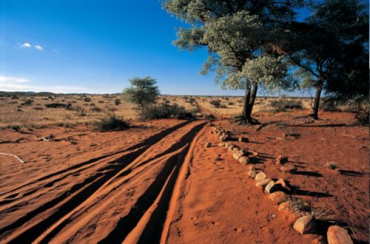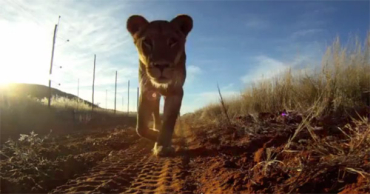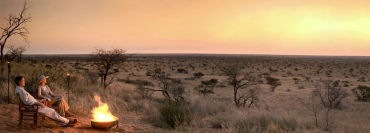 | « Back to article | Print this article |
South Africa: Dream meets reality
Last weekend we returned from a 12-day visit to southern Africa, of which two-thirds was spent in South Africa: Cape Town, Johannesburg and Tswalu Kalahari Reserve.
The last was a beautiful and slightly improbable venue for a two-day conference on African growth and employment problems and prospects.
Tswalu is the largest (about 400 square miles) privately-owned game reserve in Africa, owned and nurtured by the famed Oppenheimer family, which controls the De Beers diamond mines and has substantial interests in the Anglo-American diversified mining company.
Click NEXT to read more...
South Africa: Dream meets reality
Apart from catering to upscale Kalahari wildlife tourists, Tswalu hosts conferences (called "Dialogues") on African development issues organised by the Brenthurst Foundation, promoted by the young and dynamic Jonathan Oppenheimer, who had spared time from his manifold corporate responsibilities to be our gracious host.
It was certainly a novel experience to have the main Dialogue sessions sandwiched between early-morning and late-afternoon "game drives" in a fleet of open-sided, converted Toyota Land Cruisers, each with a young, friendly and knowledgeable driver-guide.
The sunrise and sunset in the Kalahari's rolling bush-land are breathtakingly beautiful.
Click NEXT to read more...
South Africa: Dream meets reality
So were the game: lions, rhinos, wildebeests, giraffes and varied species of deer and antelope.
In the evenings, dining under starry skies on the edge of an escarpment, we were held spellbound by dramatic retellings, by a well-known historian-raconteur, of the great battles between the Zulus and the British army, in one of which the latter suffered a rare defeat against "native" warriors and awarded 11 Victoria Crosses to the losing side.
The country's exceptional natural beauty makes the first and most obvious impression on a visitor.
Click NEXT to read more...
South Africa: Dream meets reality
In Cape Town, the awesome cliffs of Table Mountain rise almost sheer for 3,500 feet from fairly close to Table Bay, where the Victoria and Alfred Waterfront is a very happening place with lots of impromptu music, good food and even better wine.
And the 90-km drive from Cape Town to Cape Point (near the Cape of Good Hope) takes the visitor through stunning juxtapositions of mountains and seascapes, before looping back past the Boulders colony of African penguins at Simonstown and the whales of majestic False Bay ("False" because many sailing ships of yore foundered there when they wrongly thought they had attained the shelter of Table Bay).
Click NEXT to read more...
South Africa: Dream meets reality
Nestling against the eastern slopes of Table Mountain are the lovely Kirstenbosch botanical gardens, one of the finest in the world and where an Indian visitor quickly recognises many flowers and plants that Britain's imperial reach had transferred to our shores, and vice versa.
The second, lasting impression is how far South African society has travelled in the 17 short years since the abominable apartheid regime, which brutally disenfranchised and suppressed non-white populations from 1948 to 1994.
Click NEXT to read more...
South Africa: Dream meets reality
Not only has political power shifted irrevocably to the majority black community, but there also seems to be a healthy and relaxed mixing of blacks, whites and browns in the typical (admittedly, non-random) public places visited by tourists, including major tourist attractions, airports, shopping malls, hotels and restaurants. South Africa may not yet be the "rainbow nation" of Desmond Tutu's dreams, but the chasm between dream and reality has clearly shrunk.
For this progress many thousands have paid the price of deprivation, imprisonment, torture and death.
Of the many heroes in South Africa's long walk to freedom, racial equality and democracy, four have been anointed by the Nobel Peace Prize.
Click NEXT to read more...
South Africa: Dream meets reality
Their statues stand on a plinth in a quiet corner of the Cape Town Waterfront, with the majestic Table Mountain as backdrop.
Chronologically, the first recipient was Albert Luthuli, who joined the African National Congress in 1944 and led its non-violent campaigns against discriminatory laws during the tumultuous 1950s.
When he received the Peace Prize in 1960 he was the first African to do so.
Twenty four years later, in 1984, it was the turn of Desmond Tutu, who turned 80 last week.
Click NEXT to read more...
South Africa: Dream meets reality
As an indefatigable warrior for racial equality and human rights, Tutu rose to prominence in the 1980s (he was then Secretary General of the South African Council of Churches) and led the struggle against apartheid at a time when the ANC leadership was incarcerated in Robben Island and other prisons.
In 1993 South Africa's greatest leader, Nelson Mandela, won the award and went on to be the country's first democratically elected president in 1994 and subsequent father figure.
Click NEXT to read more...
South Africa: Dream meets reality
He shared the prize with the hugely under-rated F W De Klerk, who had become president in 1989 and moved quickly to release Mandela from prison and legitimise the banned ANC in 1990 and then undertake the crucial negotiations which ushered in the end of apartheid and the genuinely democratic election of a black majority government in 1994.
The third one glimpses the dark side. Apartheid has gone but some of its legacies endure.
Click NEXT to read more...
South Africa: Dream meets reality
In 1994 the black majority won political power and inherited one of the most dualistic economic and social systems in the world. City centres and well-off neighbourhoods boast first-world infrastructure, housing and amenities, world-class inter-city roads and large, gleaming airports.
In the old "Bantustans" and "townships" (read slums), physically segregated from city centres, it's a story of third-world urban poor - and all the inhabitants are black.
Economic segmentation runs strong in virtually every dimension.
Unemployment (including discouraged workers) is at a very high 30 per cent, and is much higher for blacks than whites.
Click NEXT to read more...
South Africa: Dream meets reality
Ominously, unemployment among black youth is estimated to be higher than 50 per cent.
During the neocolonial era the white ruling class owned and developed the mines and farms on which the black men and women laboured.
Manufacturing was neglected. Today's black youth continue to work in mines, farms and tourist facilities.
But there are not enough good jobs without a thriving, labour-intensive manufacturing sector.
And that is discouraged by an over-valued rand, strong mining unions, restrictive labour laws and (possibly) unrealistic wage expectations of enfranchised black youth who witness daily the good life of the white minority and well-heeled tourists.
Click NEXT to read more...
South Africa: Dream meets reality
Affirmative support programmes for employment and small businesses may have helped but not enough.
Unsurprisingly, there is a racial edge to economic and political competition, one which continues to spur emigration of skilled whites.
A black middle class is growing (and so is the brown one) but perhaps not fast enough to ward off the dangers of counterproductive radical policies.
Only time will tell how well the rainbow shines in the African sun.
The author is Member, Board of Governors and Honorary Professor, Indian Council for Research on International Economic Relations
